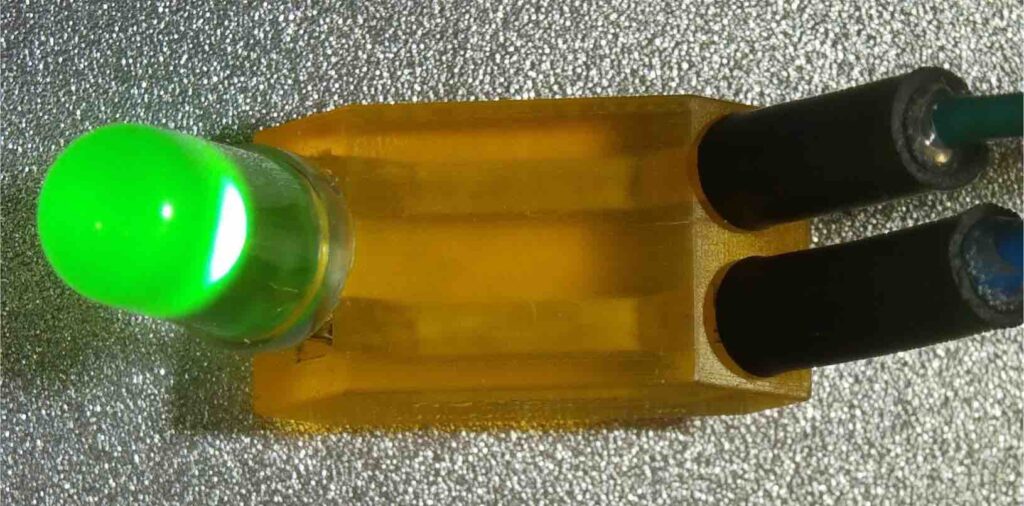Horizon Microtechnologies is a specialist in the technology of template-based 3D microfabrication, which is a post-printing process that allows new areas of industry to benefit from the power, flexibility, agility, and design freedom of micro-AM.
In recent years, micro-AM technologies have developed into cost-effective, relatively quick, and highly precise production technologies, which can build to micron level tolerances, and do so repeatably. However, the materials that can be processed by the various micro-AM technologies available today are almost exclusively polymers, and as such manufacturers looking to embrace the power of micro-AM but requiring conductive or environmentally resistant micro parts have been left frustrated. Horizon Microtechnologies developed it template-based 3D microfabrication technology to bridge this gap.
The company’s technology is a suite of processes that add material and functionality to a microstructure (the template). They are developed to work with a range of template materials and nearly independently of the template’s shape. Hence, they are especially suited as a post-printing treatment for micro-AM derived templates.

CEO at Horizon Andreas Frölich says: “There is no doubt that AM and micro-AM have disrupted the ways in which various sectors produce end-use parts for an array of applications. The dawn of ultra-precise micro-AM technologies recently opened up the advantages of AM for micro manufacturers, and by developing our microfabrication technology we have extended the areas in which AM can have a positive influence. Using micro-AM can in many instances be cheaper and quicker than using conventional manufacturing processes, and stimulates design freedom and allows the production of parts and components with geometric complexity hitherto impossible.”
Frölich continues: “You can add conductivity and environmental resistance to micro AM produced parts, and as such open the power of micro AM to manufacturers of electrodes and electrical connectors, 3D microfluidic devices, and MEMs and optics packaging. It is also possible to use the conductivity to eliminate the risk of static discharge. This is important in, for example the automated assembly of optoelectronic components (such as bare laser diodes), where it is necessary to handle components which are small, mechanically delicate, static-discharge sensitive and which have several ‘no-touch’ areas. This calls for a component specific gripper (end-effector) which combines several challenging features — tight mechanical tolerances and freely placeable internal channels for vacuum on one hand, and sufficient conductivity to prevent any build-up of static electricity on the other hand. This is precisely what Horizon can offer via its template based 3D microfabrication technology. Polymer micro-AM delivers tight mechanical tolerances and freely placeable internal channels, and Horizon’s proprietary post-printing process introduces the necessary conductivity.”
Horizon works with its customers as a product development partner, as it has in-depth expertise in the optimisation of the design of parts for micro-AM fabrication and post-processing. Considerations such as form, function, and material are all considered in consultation with the customer. The 3D microfabricated template determines the (almost) netshape of the final part, whereas the final functionality is achieved by post-processing steps.
The company’s post-processing technology can wholly or selectively coat micro-AM parts with a conductive layer, and is even able to coat difficult areas homogeneously such as long narrow channel and undercuts. Microfabricated 3D templates can also be coated with metal-oxides to make parts compatible with aggressive chemical environments and in some cases can notably increase the resistance to high temperatures and mechanical stresses.
Frölich concludes: “Effectively what we do at Horizon is open up the resolution, tolerances and other attractive features of polymer micro-AM for applications where it is otherwise not appropriate due to the polymer’s material properties. Combining the unique geometries that micro-AM can produce, the tight tolerances that the process can attain, and the weight saving possibilities that exist through its use with our proprietary post-build processes results in part functionality which polymer alone cannot achieve.
 Engineer News Network The ultimate online news and information resource for today’s engineer
Engineer News Network The ultimate online news and information resource for today’s engineer





